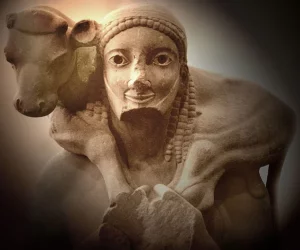The Moschophoros, or “Calf-Bearer,” is a renowned ancient Greek sculpture. It was discovered on the Acropolis of Athens in 1864. The statue dates back to around 570 BC, during the Archaic period of Greek art. This period was known for its distinctive style, featuring figures with rigid postures and the famous “Archaic smile.” Description of…
Ancient Artifacts
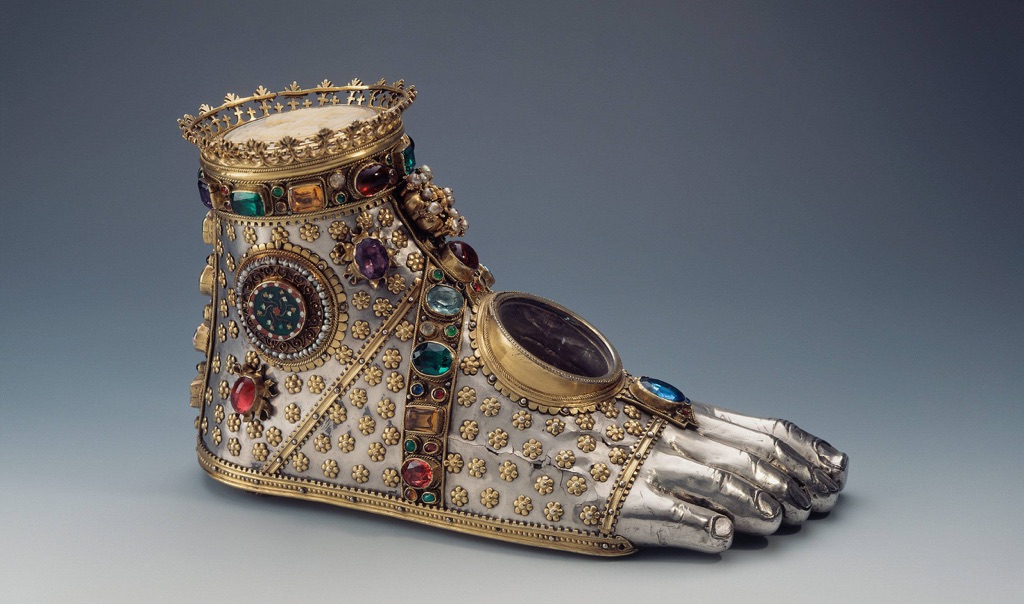
Moving to the East, ancient China artifacts like bronze vessels and oracle bones shed light on the rituals and governance of early Chinese dynasties. These artifacts highlight China’s long history of craftsmanship and written language. Similarly, ancient Egyptian artifacts are world-renowned, particularly for their funerary art, such as the treasures from King Tutankhamun’s tomb. These pieces reflect the Egyptians’ beliefs about death and the afterlife. Artifacts are not just old objects to be displayed in museums; they are keys to unlocking the secrets of human development across the ages. They preserve the ideas and values of people who lived thousands of years before us. Through careful study, they teach us about our collective history and heritage.
Among the most famous ancient artifacts in the world is the Rosetta Stone. Discovered in 1799, this granodiorite stele was the key to understanding Egyptian hieroglyphs—a script made of small pictures that was used originally in ancient Egypt for religious texts. The Rosetta Stone is inscribed with a decree issued at Memphis in 196 BC on behalf of King Ptolemy V. The decree appears in three scripts: the upper text is Ancient Egyptian hieroglyphs, the middle portion Demotic script, and the lower Ancient Greek. Because it presents essentially the same text in all three scripts, it provided the crucial link for scholars to decipher Egyptian hieroglyphs, thereby opening a window into ancient Egyptian history.
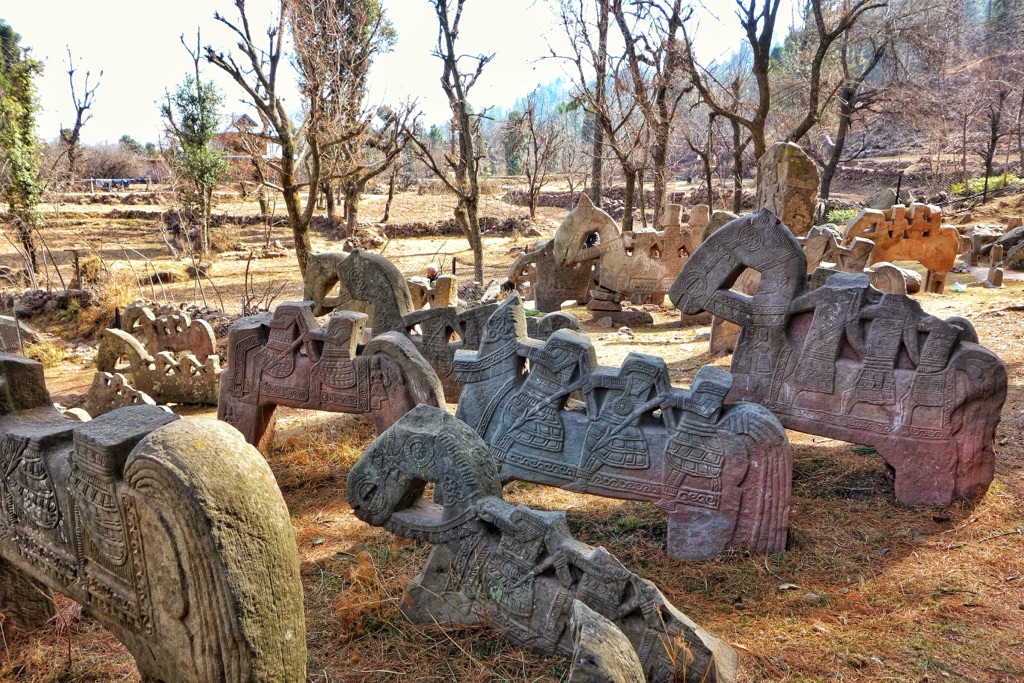
The title of the oldest artifact on earth goes to the stone tools found in Lomekwi 3, Kenya, which date back to 3.3 million years ago. These tools predate the earliest known humans and suggest that tool-making was a part of our pre-human ancestors’ way of life. These ancient tools mark a significant milestone in human evolutionary history, indicating the beginnings of technology and innovation. They are not just simple objects; they represent the dawn of human ingenuity and the very first steps towards the complex societies we have today.
An ancient artifact can be defined as any item made or used by humans in ancient times that has cultural, historical, or archaeological significance. These artifacts can range from monumental structures like the pyramids of Egypt to small, everyday objects like Roman coins. They can include items as diverse as weapons, clothing, and artwork. Each artifact, no matter its size or apparent significance, offers a glimpse into the lives of those who came before us, providing evidence of past behaviors, beliefs, and social structures.
Famous ancient artifacts not only include monumental finds like the Rosetta Stone or the treasures of Tutankhamun’s tomb but also the Terracotta Army of China, the Dead Sea Scrolls, and the Venus of Willendorf. The Terracotta Army, buried with the first Emperor of China, Qin Shi Huang, consists of thousands of life-sized figures meant to protect the emperor in the afterlife. The Dead Sea Scrolls, discovered in a series of caves near the Dead Sea, are ancient Jewish texts that offer invaluable insight into the history of Judaism and the early text of the Bible. The Venus of Willendorf, a small Paleolithic figurine discovered in Austria, dates back to about 28,000 BCE and is thought to represent fertility. Each of these artifacts, in its own way, has reshaped our understanding of human history, offering evidence of the complexity, diversity, and ingenuity of ancient civilizations.
List of Discovered Ancient Artifacts
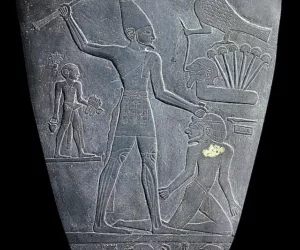
Narmer Palette
The Narmer Palette is an ancient Egyptian ceremonial artifact from around 3100 BC. This significant archaeological find is believed to depict the unification of Upper and Lower Egypt under King Narmer. Discovered in 1898 by British archaeologist James Quibell in the temple of Horus at Hierakonpolis, the palette is one of the oldest known historical…
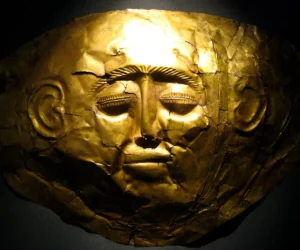
The Death Masks of Mycenae
The Golden Death Masks of Mycenae: A Glimpse into Ancient Elite Burials In the ancient city of Mycenae, a series of golden funerary masks was discovered, offering a unique window into the burial customs of the elite. These masks, unearthed within Grave Circle A, date back to the late Bronze Age and have intrigued historians…
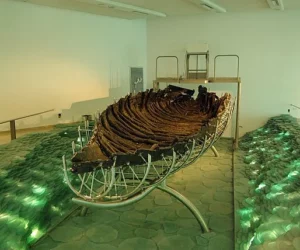
The Sea Of Galilee Boat
The Sea of Galilee Boat, also known as the “Jesus Boat,” is a remarkable archaeological discovery from the 1st century AD. Unearthed in 1986, this ancient fishing vessel provides valuable insights into the construction techniques, lifestyle, and culture of people in the region during the time of Jesus. Its well-preserved structure has made it one…
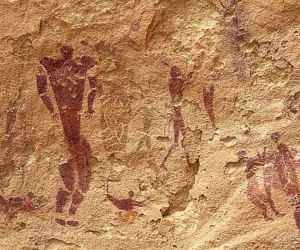
Cave of Swimmers
The Cave of Swimmers is a significant archaeological site located in Egypt. It features ancient rock art on the Gilf Kebir plateau. This site lies in the New Valley Governorate, near the Libyan border. Discovery and Historical Significance In October 1933, Hungarian explorer László Almásy discovered the cave. It contains Neolithic pictographs depicting humans and…
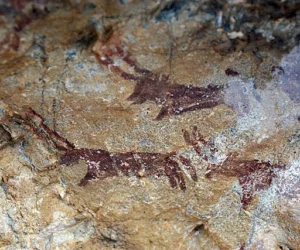
Zarautsoy Rock Paintings
The Zarautsoy Rock Paintings, located in Uzbekistan, offer a fascinating glimpse into prehistoric life. These ancient artworks, dating back to the Bronze Age around 2000 to 1000 BC, are not just artistic expressions but also historical documents. They provide insights into the daily lives, cultural practices, and spiritual beliefs of early Central Asian societies. Geographical…

